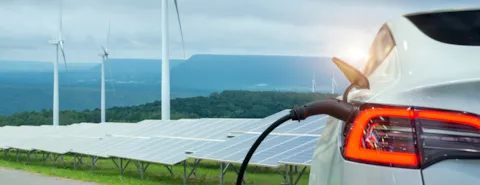It’s time to talk about how undisciplined capital is hurting renewables
Investors and developers must commit to disciplined capital to finance this coming wave of megaprojects.
When I speak with investors, I often hear about how they want to flex their sustainability muscles by financing clean energy projects. This sentiment is reflected in the volume of capital flowing into U.S. renewable energy projects right now – USD 303.1 billion in 2023 according to the U.S. Department of Energy.
Unfortunately, the large and growing influx of Wall Street investments into renewable energy projects can come with strings attached that push developers to prioritize fast delivery over proper risk management.
I call this undisciplined capital. In my view, it is preventing clean power from becoming the runaway success it should be. Fortunately, the industry has the necessary tools to reign this problem in.
Identify the weakest link, and learn from it
I lead a team of renewable energy experts that has provided advisory support in 2023 for more than 800 GW of battery energy storage, solar, power grid, and wind projects in the U.S. and Canada.
We have seen it all. Unfortunately, we often see the negative impacts of undisciplined capital.
Not too long ago, DNV performed due diligence for a large solar project. We found that the project’s design and siting left it exposed to damage from potential severe weather events. The risk was noted, and the investor bought the project without proper mitigation. And without the proper mitigation, you can guess what happened next. A major windstorm blew through the area causing catastrophic damage to the project. The same investor has reached out again to DNV to perform due diligence on another large-scale solar project with similar risks around design and siting from the same developer. They know the outcome is catastrophic damage should there be a wind event, yet looking to proceed with the investment because of the pressure to deploy capital. If these risks are not mitigated, disruption and damages are just a question of when, and that impacts all investors in the industry, increases insurance premiums.
Why is this a problem?
Investors see renewable energy as more risky each time a project fails. Naysayers and critics can push out messaging that renewables don’t work because the power will go out whenever a solar farm is hit by wind or hail. This spiral of negative sentiment can slow—or even stop—renewable project development (a challenge that is currently facing offshore wind in North America).
Independent engineers, investors, and developers can solve this problem by sharing learnings from when things go wrong—which will enable the entire industry to build more resilient and economical clean energy projects.
Know what green flags to look for
I have also seen many well-designed renewable power projects transition from development into successful operating assets. This long-term vision gives me some unique insights into what criteria smart investors should look for when assessing a renewable energy project.
- Social due diligence. Look for developers who deeply understand how their project affects local communities. People that only experience the downside of a renewable energy project will mobilize to disrupt development, resulting in costly delays at best or a cancelled project at worst.
- Systems thinking. Look for developers that think systemically. They are more likely to deliver a project that moves from a pipedream to reality. The telltale sign of a good renewable energy project is that the developer has created a team to build out and manage critical path items like congestion curtailment, interconnexion, permitting, supply chain management.
- Design. Look for developers who bring in the best independent experts to ensure a project is designed to operate safely for the long haul. It is critical that this is done early enough in the process to ensure new ideas and perspectives can shape a better project design. For example, my team was recently brought in early to support a solar project and was able to find ways to adjust the design of the panels to mitigate wind loading risk.
Get the right people at the table
Investors should look at a developer’s culture and ask, “do their ways of working enable them to bring the right people to the table?”
One thing I’ve learned in the renewable energy industry is that developers who can field a diverse and inclusive project team have an edge.
Fostering the right culture that allows for a diverse project team is a forever journey, not a moment in time. When a company gets it right, the impact is clear—better collaboration and trust, year over year improvement in delivery, and improved employee and stakeholder satisfaction.
I’ve seen the benefits firsthand when, for example, I mobilized a team to support a customer with developing their response to a transmission line procurement involving transmission line design, permitting, and power market modeling. We brought together regional experts supported by global experts, new hires working in tandem with experienced industry veterans, and a diverse mix of people of color and gender.
In the end, my team produced unique solutions for the customer that resulted in a winning bid.
Let’s get disciplined
As the energy transition accelerates, renewable power projects are going to become bigger, more expensive, and more complex.
Investors and developers must commit to disciplined capital to finance this coming wave of megaprojects. This is paramount because the risks are multiplying and growing—such as human rights violations across the cobalt supply chain, creating more value and equity for neighboring communities, and resilience for today and tomorrow’s weather conditions.
We have the tools to win, and it is imperative to get this right because our planet cannot afford preventable slowdowns in renewable power generation build out.
3/11/2024 3:00:00 PM
